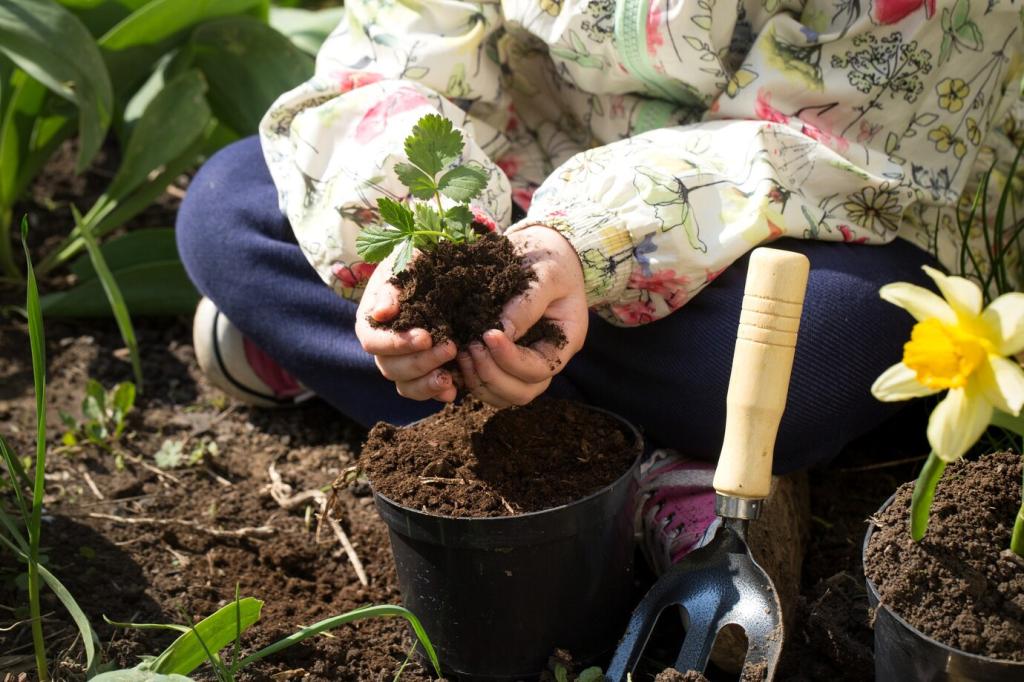Vertical Gardening Solutions
Discover the transformative power of vertical gardening solutions, the innovative approach to maximize growing space by turning walls and other upright structures into flourishing gardens. Whether you are an urban apartment dweller or a homeowner looking to add life to small patios and balconies, vertical gardening provides practical and creative ways to grow plants, improve air quality, and create stunning visual effects. Explore the essentials, benefits, and techniques for making the most of your vertical spaces.
Previous slide
Next slide
Designing Your Vertical Garden
Choosing the Right Location
Location is the foundation of your vertical garden’s success. Carefully assess light levels, exposure to wind, and accessibility for care when choosing where to install your green wall. South-facing balconies get ample sun, perfect for sun-loving vegetables and herbs, while shaded fences may be ideal for ferns and shade-tolerant plants. The chosen spot should be near a water source if possible, simplifying irrigation. Taking the time to match your aspirations with the site’s conditions ensures long-term health and vitality for your plants.
Integrating Style with Function
Marrying form and function in vertical garden design creates spaces that are both beautiful and practical. Color schemes, textures, and plant heights can be combined to produce stunning visual effects, transforming a plain wall into a living work of art. At the same time, functional aspects like easy-to-reach planters or modular systems help with day-to-day gardening tasks. Whether you want a lush, jungle-like retreat or a streamlined culinary wall, thoughtful design ensures your vertical garden is as enjoyable to use as it is to behold.
Structural Considerations and Supports
Behind every thriving vertical garden is a strong structural backbone. Choose supports and materials that can bear the weight of mature plants, moist soil, and water. Reliable frameworks—ranging from wooden trellises and sturdy wire mesh to professionally built wall-mounted systems—often determine the garden’s longevity and resilience. Secure installation prevents damage to property and ensures the safety of your vertical arrangement. Addressing these considerations early sets the stage for years of low-maintenance enjoyment.
Benefits of Vertical Gardening
Optimizing Limited Spaces
For those dealing with urban crowding and shrinking yard sizes, vertical gardening is a powerful way to maximize available space. By converting walls, fences, or narrow alleys into green zones, you can fit gardens where traditional planting beds simply wouldn’t fit. Apartment dwellers can enjoy fresh herbs or flowers on a balcony wall, and homeowners can reclaim unused exterior walls. This optimization makes city living greener and more enriching, giving everyone the opportunity to cultivate beauty and food, regardless of space.
Health and Environmental Improvements
Vertical gardens have tangible benefits for both personal well-being and the planet. They help purify the air by absorbing carbon dioxide and harmful pollutants, leading to cleaner indoor and outdoor environments. These gardens also introduce more greenery into urban spaces, providing habitats for birds and beneficial insects, and helping cool buildings naturally through shade and transpiration. Even a modest vertical installation contributes significantly to a healthier, more sustainable cityscape.
Enhancing Well-Being and Aesthetics
Being surrounded by living greenery contributes to lower stress levels, improved mood, and increased creativity. Vertical gardens introduce these wellness benefits even in the busiest urban areas, transforming drab facades or plain office spaces into uplifting environments. The dynamic color and texture of living walls offer daily inspiration and a sense of accomplishment. For many, the simple act of gardening becomes a meditative ritual, fostering mindfulness and a closer connection with the natural world.
Indoor Vertical Gardening Ideas
Living walls create a dramatic focal point in living rooms, studies, or hallways. Using specially designed panels or modular systems, a variety of low-maintenance houseplants can be arranged vertically, creating lush canvases of green. These installations do more than beautify—they filter air and regulate humidity, actively enhancing indoor comfort. With options ranging from small framed plant art to wall-spanning displays, living walls are a versatile highlight for any contemporary interior.
Balcony and Patio Transformations
Make the most of balconies and patios by turning bare walls or railings into exuberant gardens. Vertical planters or planting pockets can be attached to railings, offering a layered look without crowding limited floor space. This setup allows for diverse plant groupings, from trailing flowers to culinary greens, bringing freshness and privacy to your outdoor haven. Creative solutions like hanging gardens or DIY pallet walls can personalize even the smallest of outdoor spaces.
Fence and Wall Installations
Turn utilitarian fences or exterior house walls into stunning green features. Vertical systems attached to these structures provide support for climbing plants, succulents, or even vegetables. These installations can serve as natural screens to block noise and wind or to provide privacy from neighbors. As plants grow and fill in the structure, they soften hard lines and inject natural beauty into what might have been an overlooked or unsightly area.
Urban Edible Gardens
City dwellers can enjoy fresh produce by establishing vertical gardens on rooftops, balconies, or shared courtyard walls. By utilizing containers or modular panel systems, you can grow tomatoes, peppers, peas, strawberries, and more. These edible green walls not only offer a sustainable way to supplement your diet but also reduce the urban heat island effect and foster a sense of community among neighbors. Edible vertical gardens embody the best of form, function, and local food security.
Innovative Vertical Garden Systems
Modular systems consist of trays, pockets, or panels designed to attach to walls and support a wide range of plants. These allow for easy customization and scalable installs, letting you start small and expand as you gain confidence. Maintenance is streamlined since individual panels can be swapped or replaced as needed. With built-in irrigation and drainage, modular green walls are user-friendly for beginners and perfect for those who want a tailored, visually-stunning garden.
For those who enjoy hands-on projects, DIY vertical gardens are a rewarding and cost-effective route. Simple materials such as pallets, shoe organizers, gutter sections, or recycled bottles can be transformed into creative planters. DIY enthusiasts can build structures to fit odd spaces or express a unique decorative style. While these solutions may demand a bit more effort for installation and maintenance, they offer limitless opportunities for personalization and experimentation for both novice and seasoned gardeners.
Technological advancements have introduced smart vertical gardens with automated watering, lighting, and feeding. These systems are ideal for busy lifestyles or for those who need extra support with plant care. Sensors monitor soil moisture and growth conditions, adjusting irrigation and lighting accordingly, which significantly reduces the risk of over- or under-watering. Automated solutions open the world of vertical gardening to beginners and travelers, ensuring healthy plants with less hands-on demand.
Managing water efficiently is crucial for vertical gardens, where gravity naturally accelerates drainage. Drip irrigation systems are especially effective, delivering consistent moisture directly to plant roots while conserving water. On smaller scales, self-watering planters or manual misting may suffice. It’s important to monitor for both drying and waterlogging, as each tier may have different water needs. Regular checks and minor adjustments foster optimal health and growth across the entire installation.

Budget-Friendly Projects to Try
Creating a vertical garden doesn’t require a hefty investment. Start with repurposed materials or inexpensive ready-made kits that fit your available space. Hanging shoe organizers, old wooden pallets, or stacked pots can quickly be transformed into productive green walls with minimal expense. Begin with a manageable number of plants as you fine-tune your maintenance routine. As your confidence grows, you can expand and tailor your garden to new spaces and plant varieties.
Connecting with the Vertical Gardening Community
There is a wealth of support and inspiration available for vertical gardeners at every stage. Online forums, local gardening clubs, and social media groups allow you to share experiences, seek advice, and showcase your achievements. Community events and workshops also provide opportunities to learn from others, swap plants, and discover regional best practices. Connecting with other enthusiasts can turn vertical gardening from a solitary hobby into a shared passion, offering motivation and camaraderie along the way.
